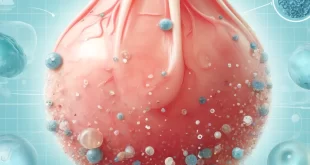Did you ever think that food could be produced this way? The answer is yes, and judging by what scientists at the Japanese University of Osaka have “printed”, it is perfectly possible to do so fairly faithfully. What have they achieved? Simple, but surprising: a piece of meat from the famous cut of wagyu beef.
It is a piece of meat identical to a cut of animal origin in terms of color, shape and even grain. But it’s the origin that makes it so special. The reason? It does not come from a slaughtered animal, but from its cellular fibers, taken and “assembled” to create a perfect product by bioprinting .
In an effort to prove that it is not necessary to sacrifice a living being to obtain valuable meat, Japanese scientists created their own laboratory experiment and shared their findings with the world. It’s not the first time we’ve talked about cultured or synthetic meat , but this one is truly impressive.
Wagyu meat is particularly prized and very expensive, because it comes from cattle specially selected to have tissues rich in unsaturated fats, but also because it is the first time in the world that 3D printing has gone so far. . Using stem cells and the organization of muscles, blood vessels, and fat, the researchers were able to perfectly model what they were creating – meat almost indistinguishable from the original. A kind of “magic” made possible by three-dimensional bioprinting.
“By improving this technology,” said Michiya Matsusaki, one of the study leaders, “it will be possible to replicate complex structures in meat and make changes to the components of fat and muscle. This is all with the aim of providing the future cuts of cultured meat that perfectly reflect the needs of the consumer, such as the right amount of fat or nutrients.
The idea is therefore that of a future in which the consumption of these foods is increasingly sustainable, both from the point of view of the environment and the specific needs or problems of each individual. It is not yet clear how these lab-generated products will be treated from a regulatory perspective in different countries, but it is clear that this technology is advancing rapidly. What do you think of this technological evolution?
Source:
https://resou.osaka-u.ac.jp/en/research/2021/20210824_4
 medjouel.com Study Non Stop
medjouel.com Study Non Stop



